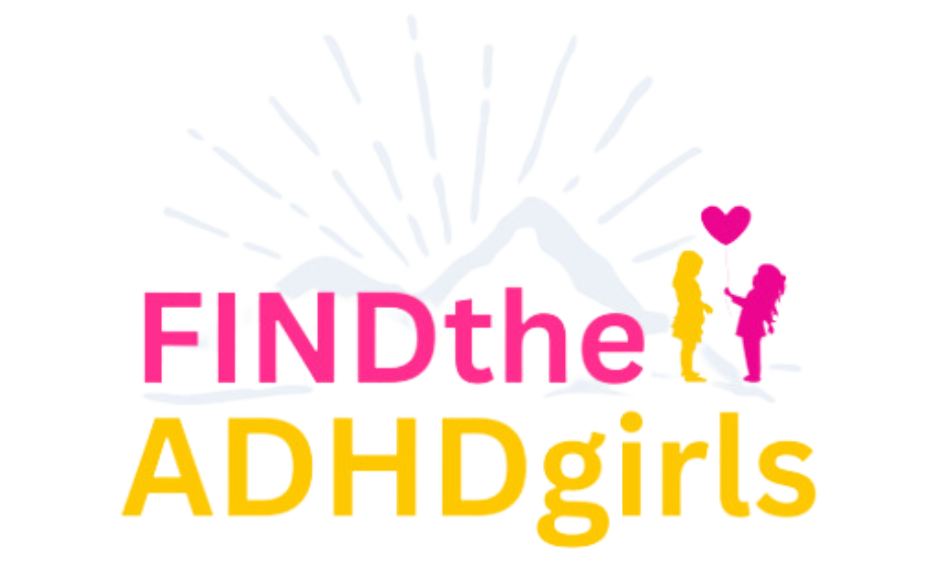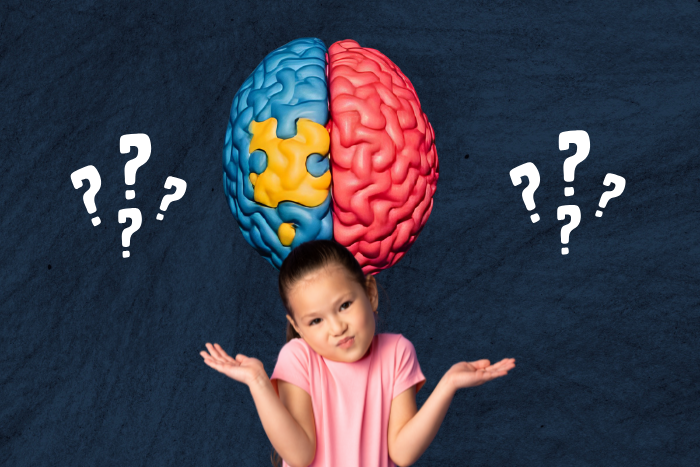Is It Just ADHD? When Autism in Girls Hides in Plain Sight
If you have a daughter with ADHD and still feel like something doesn’t quite add up, you’re not imagining it. Sometimes, the truth is more complex — and more overlooked — than we realise. Maybe she’s always had intense interests, avoids eye contact, or melts down over tiny changes in plans. Or maybe her behavior gets misread as being ‘mature for her age’—when in fact, it’s a form of coping, not confidence. Or maybe she seems like a social butterfly at school but collapses from exhaustion at home. You might have asked yourself more than once: Is this still ADHD? Or is something else going on, too?

It might be both. When a child has both ADHD and autism, it’s called AuDHD. And in girls, it often goes completely unnoticed until much later—if it’s caught at all.
Let’s break down what AuDHD really looks like in girls, why it’s often missed, and how to support girls who are masking their way through the world.
And remember: ADHD, autism, and AuDHD are all spectrum conditions. No two girls will look exactly the same. But understanding these patterns helps us ask better questions—and offer better support.
By the Numbers – and Why They Matter
First, let’s talk stats:
- 50–70% of children diagnosed with autism also meet criteria for ADHD
- 20–50% of children with ADHD show significant autistic traits
- Girls with both conditions are far more likely to be misdiagnosed or diagnosed much later than boys
(Source: Leitner, Y. (2014). The co-occurrence of autism and ADHD in children – what do we know?)
So yes—ADHD and autism frequently show up together. But autism in girls often looks different than the stereotypical image. It’s not always about trains or tantrums. It might look more like people-pleasing, emotional intensity, or a child who seems “fine” to everyone but you.
How Autism in Girls Can Look Like… Something Else
Autistic traits in girls often fly under the radar because they don’t match the textbook examples. Instead of the stereotypical image of an isolated or obviously withdrawn child, autistic girls may appear sociable, helpful, or imaginative—on the surface. But beneath that surface, many are struggling silently.
Parents often notice things that don’t quite fit: an intense need for routine, obsessive interests, extreme emotional reactions, or sensory sensitivities that seem unrelated to typical ADHD. These signs might be dismissed by others as quirks, anxiety, or even maturity. But when they persist and cluster together, they could be pointing toward autism.
Here’s what autism can look like when it overlaps with ADHD in girls:
It’s important to remember that both ADHD and autism exist on a spectrum. Many girls with inattentive ADHD share similar challenges—but in AuDHD, those behaviours often show up with more intensity, more persistence, and more emotional overwhelm. For example:
- A girl with ADHD might struggle to switch off her thoughts at bedtime. A girl with AuDHD might lie awake for hours, replaying every conversation and needing her routine exactly right before she can rest.
- A girl with ADHD might be forgetful. A girl with AuDHD might panic if her pencil case isn’t arranged exactly how she left it.
- A girl with ADHD might avoid homework because it’s boring. A girl with AuDHD might avoid it because the layout changed and now it feels impossible.
Often, it’s by talking to other parents or observing subtle patterns over time that caregivers realise: this isn’t just about attention—it’s about how the whole world feels to her.
“She’s so polite and helpful in class—always the first to clean up. But at home, she screams if we rearrange the furniture.”
- Social scripting: She may have learned “rules” for conversation, but struggles in free-flowing social settings.
- Mimicking: She copies friends’ speech, posture, or interests just to fit in.
- Meltdowns at home: She holds it together at school but unravels in her safe space.
- Emotional extremes: Joy turns to devastation on a dime—and no one sees the triggers but you.
- Repetitive play or routines: Lining up toys or watching the same scenes repeatedly.
- Sensory quirks: Overreacts to scratchy clothes or loud noises—or doesn’t notice pain or hunger at all.
“Everyone said she was just shy. But I could see the panic behind her eyes every time someone tried to make small talk.”
These signs are often misread as anxiety, shyness, OCD, or just being “dramatic.” What makes it different is not just one behaviour — but the cumulative pattern. Parents may start noticing a ‘cluster’ of traits that don’t fully add up to anxiety or ADHD alone — that’s often the clue that something more is going on.
Masking, Mimicry, and the Exhaustion of Fitting In
One of the biggest reasons autism in girls gets missed? Masking.
Masking is the art of blending in. It means suppressing stims (self-soothing behaviors like rocking, tapping, or fidgeting), rehearsing responses, and constantly monitoring your behavior to avoid standing out. Parents might notice subtle or even intense stimming at home – especially when their child is feeling overwhelmed or trying to regulate emotions. While ADHD can involve fidgeting, stimming tends to be more patterned, rhythmic, or emotionally linked – and it can be a key clue that autism traits are also present. And girls are really good at it -often to their own detriment.
“She comes home from school completely drained. It’s like she’s been acting on stage all day—and I’m the one who sees the crash after the curtain falls.”
A girl with AuDHD might:
- Smile and nod while totally confused by social cues
- Copy friends’ interests to avoid being “weird”
- Apologise constantly, even when she hasn’t done anything wrong
- Come home and collapse in tears or rage from the effort of holding it all together — or, in some cases, keep masking at home too, especially if they feel pressure to maintain control or avoid judgment even in familiar spaces
Over time, this constant performance can lead to burnout and, eventually, imposter syndrome. It can also contribute to other mental health challenges, such as chronic anxiety, depression, low self-esteem, and even eating disorders—especially when a child feels she must constantly hide who she is just to be accepted.
“No one saw how hard she was trying, just how quiet she was. And they called that resilience. It wasn’t.”
ADHD and Autism Need Different Supports (Even When They Co-Exist)
It’s tempting to think that since you already have an ADHD diagnosis, you’re covered. But autism brings additional needs that ADHD strategies don’t always address:
- Executive function vs. social communication: ADHD tools might help her focus but won’t teach her how to read between the lines in a conversation.
- Sensory regulation: That meltdown over the seam in her socks? It might need more than a visual schedule.
- Support at school: A child who masks well might not get the support she needs unless someone really looks under the hood.
Recognising AuDHD means you can move beyond one-size-fits-all ADHD strategies and provide more tailored support for your child. Keep in mind that every child with AuDHD is different—what works for one might not work for another. That’s the nature of spectrum conditions. That might mean understanding her sensory triggers, validating her need for downtime after social situations, or helping her build social scripts in a non-pressured way. It also means you’re less likely to misinterpret her behaviour as defiance or emotional overreaction—and more likely to meet her where she is.
In practice, this can lead to better tools, deeper understanding, and fewer meltdowns (for both of you).
How Masking Leads to Mental Health Challenges – and Then to Imposter Syndrome
When a child constantly performs to fit in, over time she may begin to internalise the belief that her real self isn’t acceptable. This kind of chronic masking—especially when no one recognises it or supports the child behind it—doesn’t just lead to exhaustion—it can have deep mental health consequences. Girls who mask regularly are more likely to develop anxiety disorders, depression, low self-worth, and even eating disorders or self-harm behaviours. The pressure to blend in, avoid being “too much,” and meet invisible social standards can take a toll that builds slowly, often hidden in plain sight.
Eventually, that inner disconnect—between how she presents herself and how she feels—can evolve into imposter syndrome. Many AuDHD girls feel like they’re faking it, even when they’re doing well—even when they’re doing something they’re genuinely good at. They may struggle to believe their successes are real, or that they come from who they truly are, not just from the version of themselves they’ve learned to perform. Without the chance to unmask in safe environments, they may come to believe their successes are accidents, or that they must work twice as hard as everyone else just to be accepted.
“She started saying things like ‘I’m not really good at maths—I just got lucky.’ That’s when I realised her confidence had started to crack.”
To help prevent this, you may need to seek professional help and work with clinicians, therapists, or educational specialists who truly understand the complexities of AuDHD. It’s not always simple or quick—but having the right support can make a profound difference. Here are some approaches that can help:
- Name what’s real: Give your child language to talk about her brain, her needs, and her feelings
- Celebrate authenticity: Praise her not just for achievements but for being honest, unique, and self-aware
- Create safety to unmask: Home should be the place where she can stim, meltdown, and just be
This isn’t about lowering expectations. It’s about making success sustainable—and helping her grow up knowing that she is enough just as she is.
When Schools Only See the Surface
Unfortunately, schools often don’t pick up on these challenges—especially when a girl appears well-behaved and keeps up with her academics. Many systems are trained to notice disruption, not distress. If she’s getting good grades and not causing trouble, her social struggles, sensory needs, or emotional exhaustion may be completely overlooked. This can leave parents feeling doubted and children unsupported, even when they’re clearly struggling.
“The school said she was ‘no trouble at all’—but they hadn’t seen her chew her jumper sleeve raw from anxiety.”

What You Can Do Next (Even If You’re Not Sure Yet)
You don’t need to have all the answers right now. But if something feels off, it’s worth exploring. Here’s where to start:
- Keep a journal: Track patterns—especially differences between home and school behavior.
“It wasn’t until I brought in a journal of what I saw at home that the school started to take my concerns seriously.”
- Talk to someone who gets it: Not all professionals are trained in spotting autism in girls
- Look for overlap: The ADHD diagnosis might be the start, not the end, of your journey.
- Share your observations and concerns with your child’s school early on—even if they haven’t noticed anything unusual. Sometimes, educators only focus on what’s visible: good behavior and decent grades. But your insights as a parent can help them look beneath the surface, watch for more subtle signs, and respond with greater understanding and flexibility.
You don’t need to label your child. You just need to understand her better—and give her the tools to understand herself.
Key Takeaway: Autism in girls with ADHD doesn’t always look like what you expect. But spotting the signs early, especially masking and sensory differences, can lead to better support, fewer meltdowns, and a girl who knows she doesn’t.
Article was originally published at: adhdinsighthub.com
About the Author

Dana Dzamic
An ADHD and Autism Consultant and Inclusive Researcher who helps uncover the hidden struggles of neurodivergent girls and women, focusing on early identification, masking, and inclusive support.
Share via:

